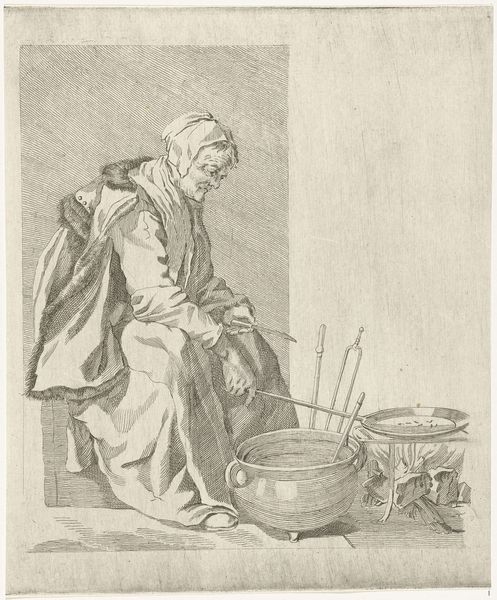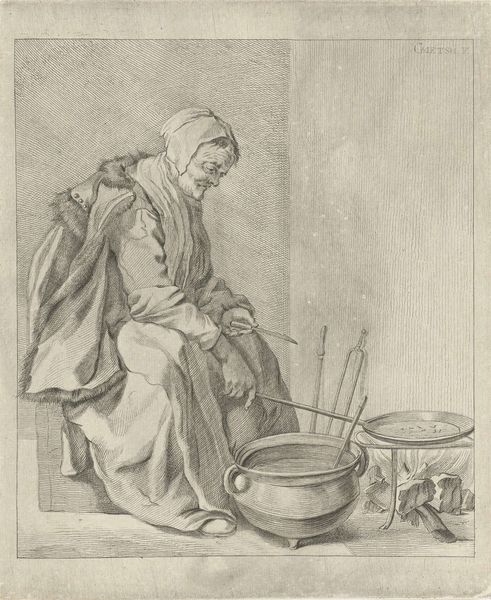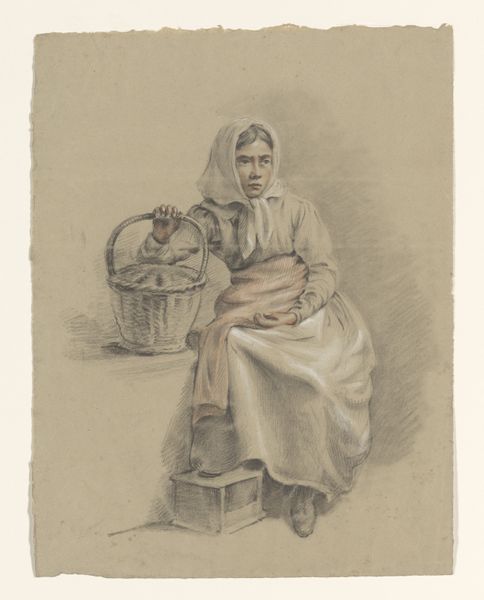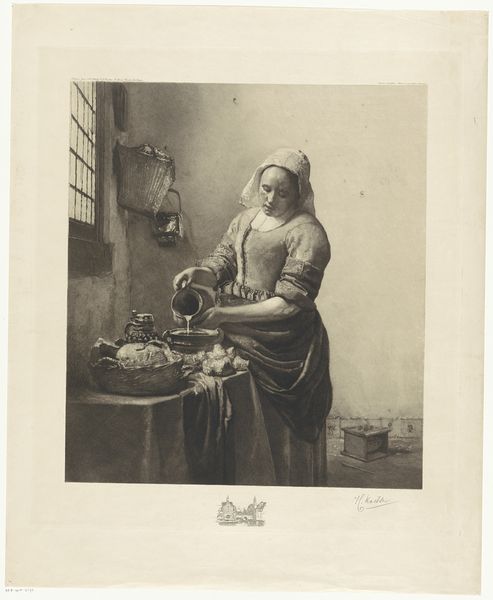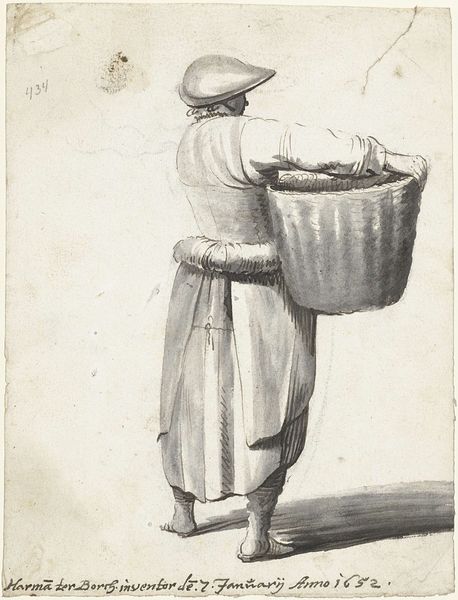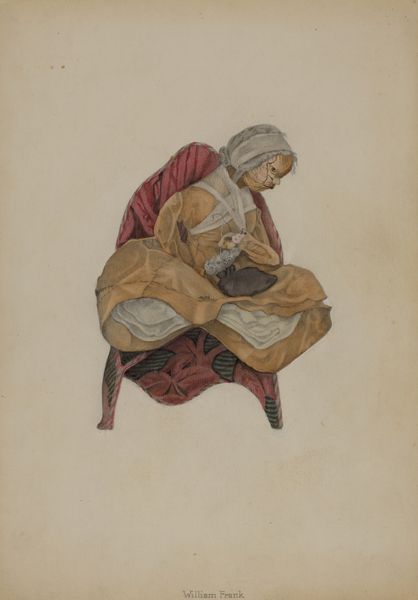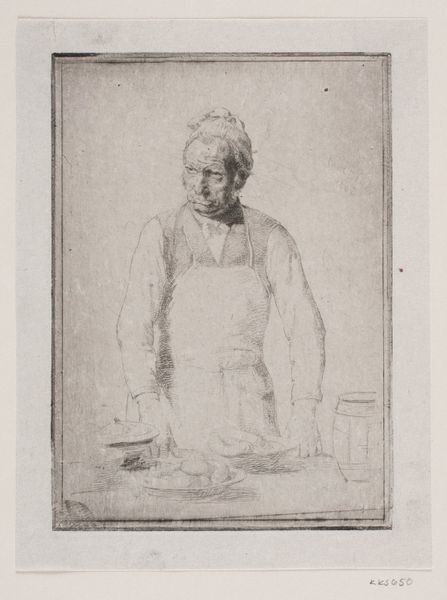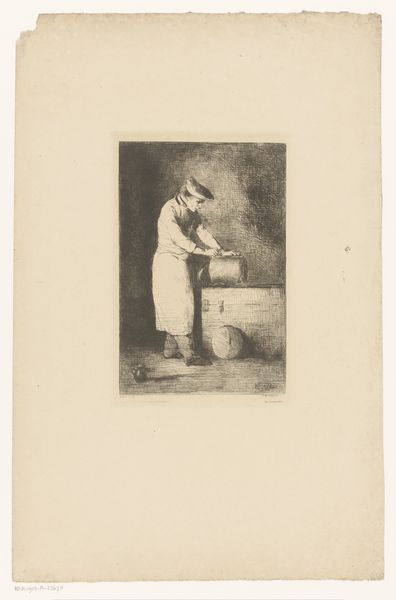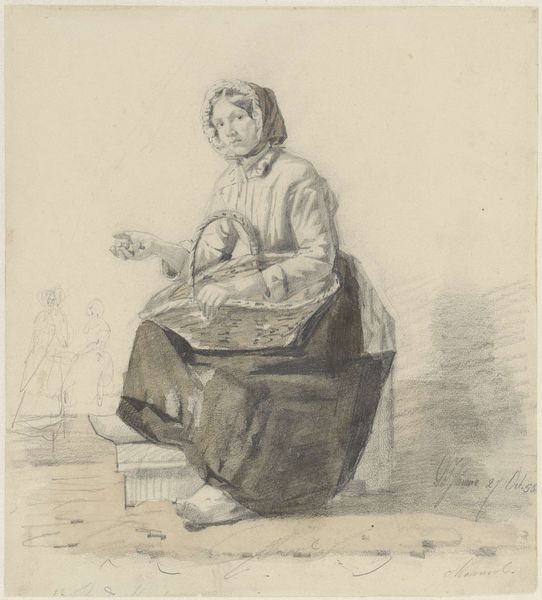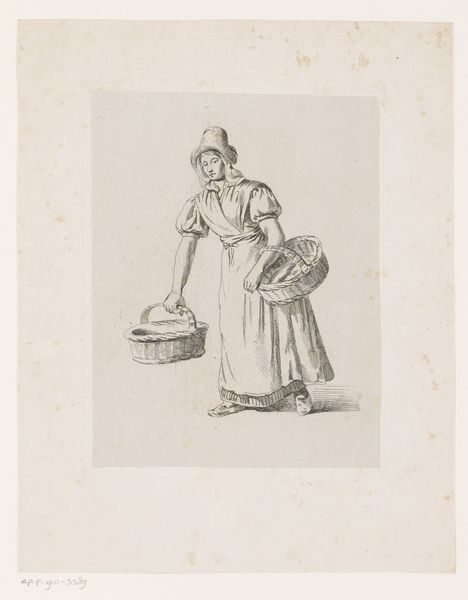
drawing, paper, ink
#
portrait
#
pencil drawn
#
drawing
#
pencil sketch
#
figuration
#
paper
#
ink
#
pencil drawing
#
portrait drawing
#
genre-painting
#
academic-art
Dimensions: height 301 mm, width 240 mm
Copyright: Rijks Museum: Open Domain
Curator: We’re looking at Pieter van Loon’s “Girl with Bucket Standing by a Table,” likely created sometime between 1811 and 1873. It's a genre scene rendered in ink and pencil on paper. Editor: My initial impression is one of quietude and introspection. There’s a certain weight in the girl's posture and gaze; she seems burdened by her task or perhaps her social standing. Curator: The bucket, prominently positioned, symbolizes a cycle of labor, but it could also represent resourcefulness and provision, essential feminine virtues, perhaps, in Dutch genre painting. Editor: Absolutely, and that symbolism isn’t neutral. Domestic work has historically been gendered and devalued. The way she's framed, almost leaning into the weight of the bucket, speaks to that societal pressure. Is this supposed to be virtuous or simply resigned? Curator: The simple clothing and head covering echo modesty and servitude. Think of similar head coverings as protective gear in the field. The bucket she rests her arm upon becomes a tool for the transfer of meaning— connecting field to home to femininity. Editor: I agree, and consider the composition, where her figure dominates much of the space yet the blankness of the page all around almost silences her individual voice. Curator: It's a window into 19th-century Dutch life, showcasing, perhaps, an idealized version of feminine domesticity and social order, and hinting at both the reality and the ideals of the time. Editor: Idealized for whom? It's a good reminder of the need to question who gets represented in art history and under what conditions. It pushes us to see those missing faces and ask who they were, what were their lives, outside the image frame. Curator: Precisely. Symbols, though seemingly straightforward, reveal the culture in which the art emerged. Each artwork then stands as evidence. Editor: Ultimately, it encourages critical reflection. Van Loon gives us this specific person caught at work, and she now prompts us to look past face value.
Comments
No comments
Be the first to comment and join the conversation on the ultimate creative platform.
